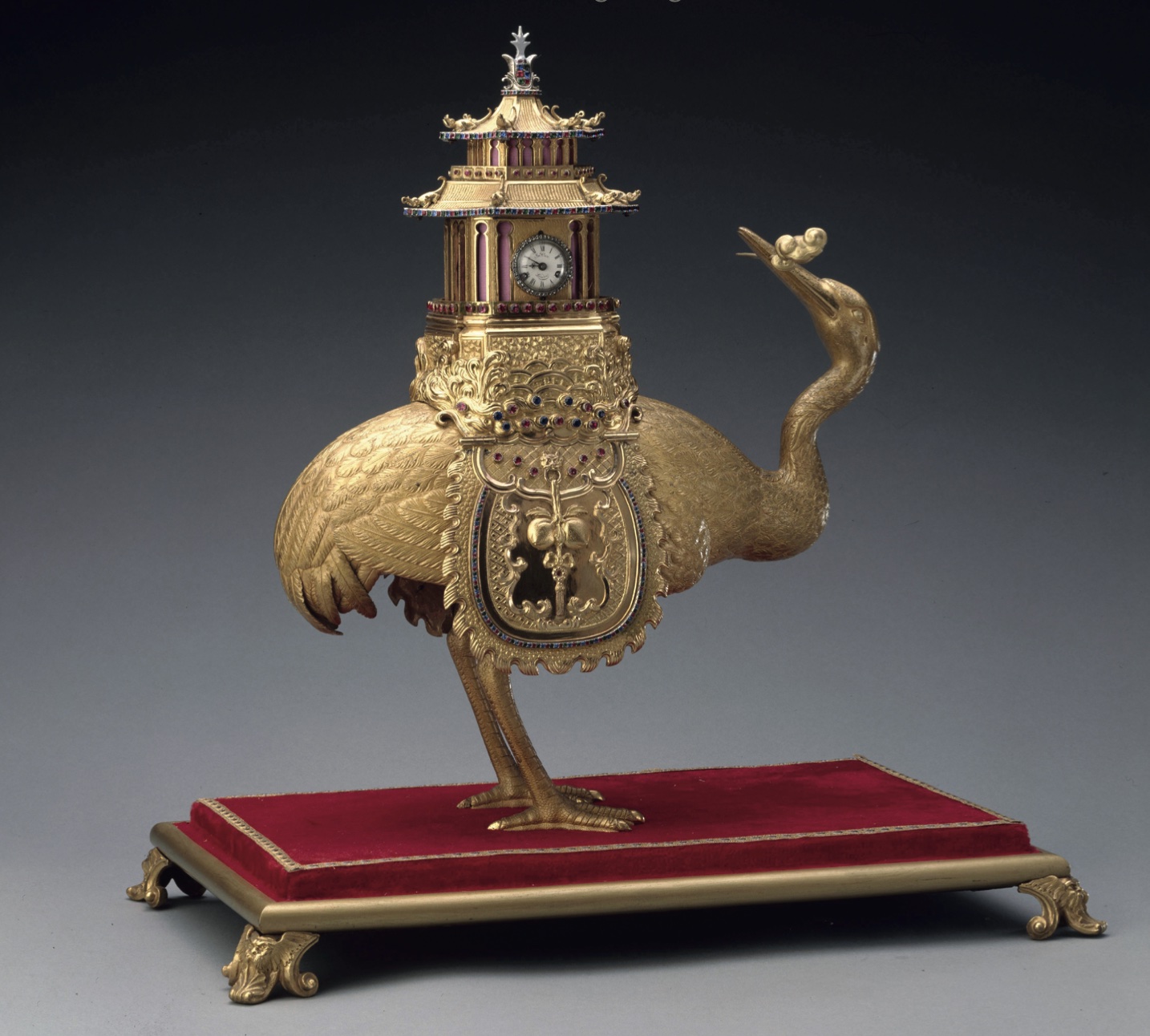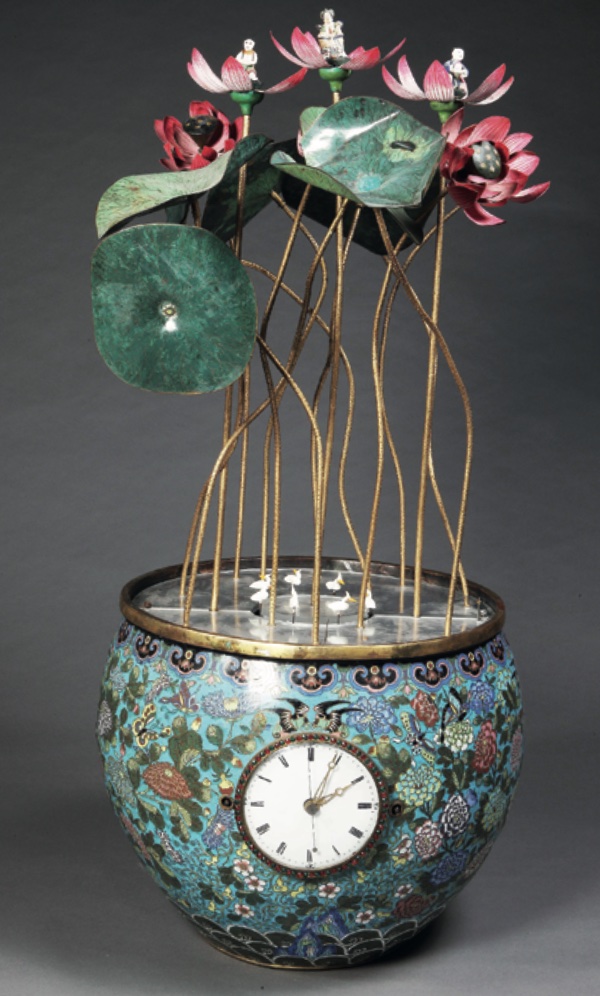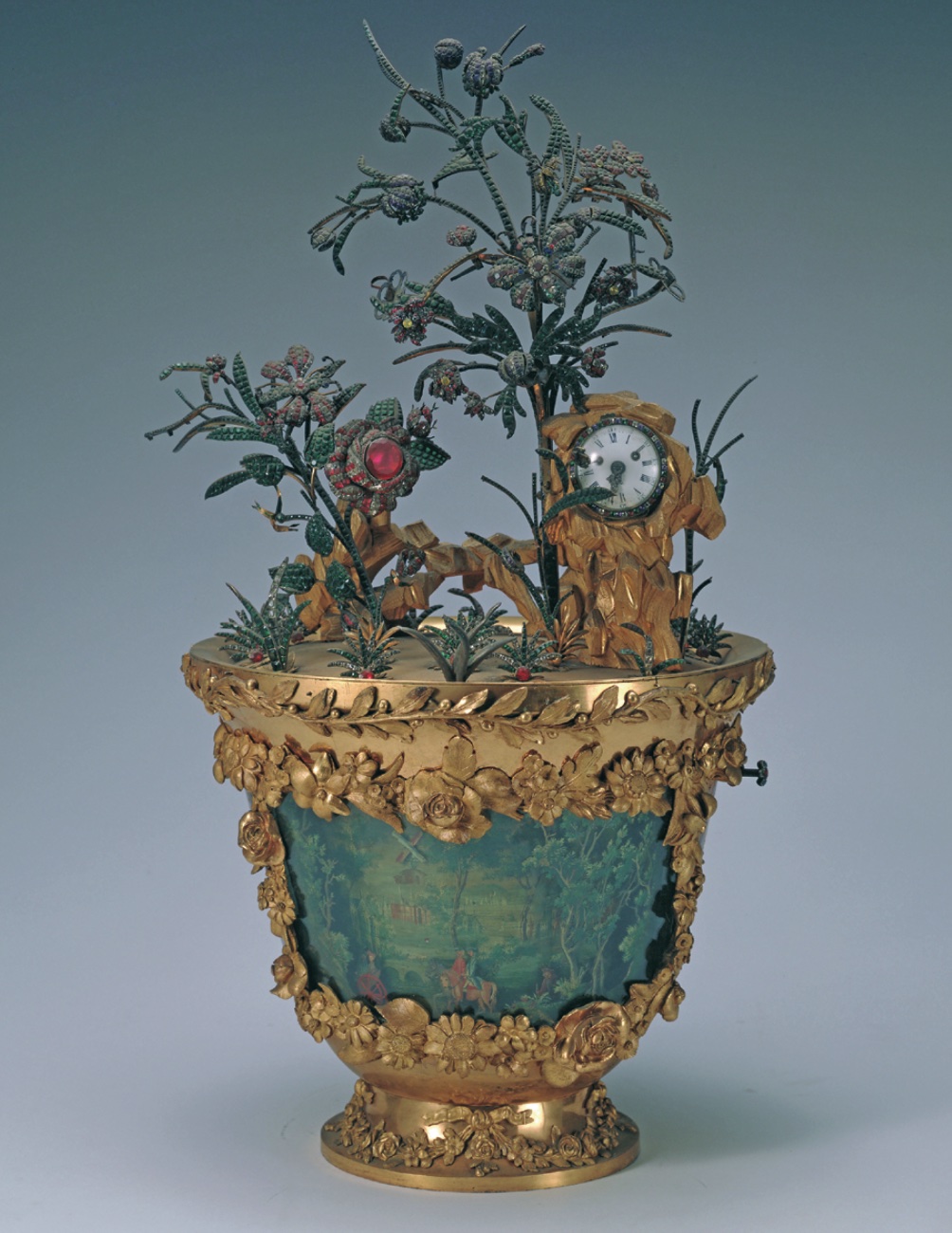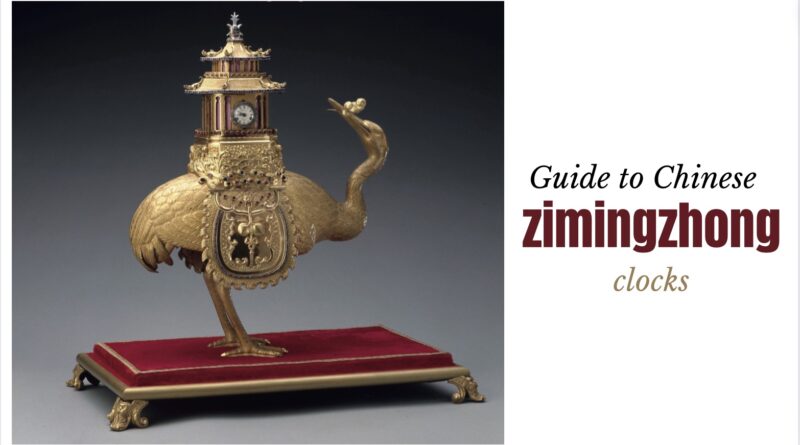Guide to Chinese zimingzhong clocks
Both intricate and fantastical, Chinese zimingzhong or ‘sing-songs’ clocks were high fashion among the Imperial Court. But despite the lotus leaves, cranes and bats, they had British makers at their heart, Antique Collecting spent some time at a recent exhibition to learn more
Zimingzhong clocks on song
While English clocks were exported to China from as early as the 16th century, by the 18th century, they had morphed into luxurious versions. These fancy automata, known as ‘sing-songs’ in England and zimingzhong in Chinese, soon caught on with the country’s emperors and high-ranking court officials.
It’s easy to see why. Clocks were already part of courtly gift-giving traditions, with courtiers and overseas visitors presenting spectacular designs to the Qianlong emperor, the fancier or more intricate the better.

Zimingzhong, meaning ‘self-sounding bells’ and pronounced ‘zi-ming-jong,’ were a unique combination of East and West. Not only did they tell the time, they
played music ranging from Handel to the Chinese folksongs Molihua and Jasmine Flower. As the new exhibition at the Science Museum shows, many of them started their journeys 8,000 miles from the Forbidden City in 18th-century London clockmakers’ ateliers.
Global trade
In the 1700s China was at the centre of an emerging globalised economy and held a quarter of the world’s wealth. Across Europe, fashionable Chinese goods such as silk, porcelain and tea were in high demand.
But in contrast, most British exports were not popular in China, with UK merchants having to part with precious silver to aquire Chinese goods. To help address the trade imbalance, merchants brought British-made luxury goods, including zimingzhong, to Guangzhou, a bustling port on China’s southern coast, to trade.

Snapped up by Chinese officials, they were sent 2,000km to the Forbidden City as a gift to the emperor as a sign of loyalty and to curry favour.
Combination of talents
With their many parts, from gilt metal figurines to musical mechanisms, making a zimingzhong required the skills of a wide variety of makers in workshops across Europe.
But while hundreds of makers could be involved in the creation of just one zimingzhong most of their names remain unknown as most did not sign their work.

The zimingzhong above is known to have had three makers. The intricate enamel paintings were made by the artist John Howes, who first exhibited at the Royal
Academy in 1772. John Marriott of the Clockmakers’ Company made the clock mechanism, and goldsmith Lewis Pantin crafted the elaborate gilt-metal casing.
Chinese zimingzhong makers
It was not long before clockmaking centres grew up across China where skilled artisans re-created, adapted and made their own zimingzhong. The most important ones built up around the port of Guangzhou itself, with its large community of skilled makers.
Using local talent was cheaper than importing from Europe, and zimingzhong could be made to the emperor’s specific instructions.

The makers built on China’s tradition of mechanical knowledge dating back thousands of years before zimingzhong arrived. As long ago as the 11th century Song Su (1020–1101) had designed a water-powered astronomical clock tower featuring the first known example of a mechanical escapement (a device for regulating a timekeeper). But it appears the knowledge was lost over time and the types of mechanisms within European zimingzhong would have appeared new to most people in China in the 1700s.

Blue enamel
Some of the Chinese-made zimingzhong from Guangzhou can be identified through their blue enamel decoration used to cover a metal such as copper or silver. To create the enamel, the maker formed a powdered glass paste, mixing it with cobalt oxide, which gave it a deep blue colour. Glass paste was then applied to the metal and heated at a high temperature, fusing it to the surface. Another Chinese feature was the use of kingfisher
feathers on the clock. The complex and delicate process of attaching feathers to metal is known as (dian cui, a dipping of blue) which became particularly popular during the Ming and Qing dynasties. Craftspeople probably glued the feathers to a backing sheet before delicately bonding this to the surface of the clock.
Lost in translation
With such a cross-cultural trade there were often mishaps on both sides. When it came to British zimingzhong designed for the Chinese market little was known of the Far East. Most people in Britain had never met someone from China, nor travelled there themselves. Designers made assumptions about Chinese tastes based on European travel writing and imported Chinese products – and by using their, generally flawed, imaginations.
With its turbaned figure and tasselled tent, Indian in concept, the zimingzhong (below) reflects some of the misconceptions of China in the 1700s. Equally, when the Qianlong emperor ordered Guangzhou makers to reproduce British zimingzhong mistakes were also made, such as one example made by London clockmaker Timothy Williamson, which shows the name and place on the dial are upside down.

Zimingzhong swan song
In 1796, the Qianlong Emperor’s son, the Jiaqing Emperor, ascended to the throne. Unlike his father he saw expensive zimingzhong as a waste of money and the British trade soon faded. However, zimingzhong continued to be used in the Forbidden City and by China’s elite. Today, a permanent exhibition of more than 1,500 amazing zimingzhong inspires millions of visitors each year at The Palace Museum in Beijing.
Fusion of symbols
Makers in both the East and West had to be particularly knowledgeable about the symbols which would appeal to the Chinese market.
The Qianlong emperor apprecated zimingzhong with restrained wooden architectural designs (below).

Within its floral decoration are nine bats. The Chinese word for bat, fu, sounds similar to the word meaning good fortune. Bats are therefore an auspicious symbol in China.
At the base of the clock lotus petals symbolise purity, an association made because lotus flowers grow out of mud.
Equally, the exhibition includes a publication from 1809 written by Chaojun Xu and on loan from the Needham Research Institute, titled Illustrated Account of Zimingzhong.
The document was used as a guide for converting the Roman numerals used on European clocks into the Chinese system of 12 double-hours (shi).
Arcadian scenes
Despite very little knowledge of Britain, on the other side of the coin, scenes of English rural utopia were greatly favoured at the imperial court. As a counterpoint to such opulence, many zimingzhong feature ‘humble’ pastoral scenes, with farmyard animals and thatched huts.
One such of a shepherd scene was created by the British maker Timothy Williamson, who was not a horologist (the clock mechanics may have been supplied by the maker William Hughes in High Holborn) but had the skills of a talented goldsmith.
Williamson was adept at combining both eastern and western sensibilities, with one of his zimingzhong featuring a young writer wearing a Georgian court suit. Instead of writing in alphabet, he is writing in Chinese.
Numerous musical clocks by Williamson were sent to the Chinese emperor and are today in the Beijing Palace Museum, including a spectacular pagoda-form automaton clock, produced in collaboration with the Swiss Jacquet-Droz family with a scroll in Chinese characters.
Instruments of power

Collecting Western curiosities was a political strategy for Chinese emperors. Three generations of emperors collected zimingzhong during the Qing dynasty between 1662 and 1795: the Kangxi Emperor (1662-1722), the Yongzheng Emperor (1723-1735) and the Qianlong Emperor (1736- 1795), the latter being their most ardent fan.
The Qing dynasty was a time of great prosperity and social change in China with emperors amassing hundreds of zimingzhong, using them to demonstrate their power and international reach.
One such is the zimingzhong (above) showing a print of Louis XIV and made by the noted London clockmaker of Huguenot descent Stephen Rimbault (1711–1786).
It had the dual purpose of being an accurate timekeeper to organise imperial work and life, but secondly, and most importantly, with its Western technology and aesthetic, by displaying it in
the Forbidden City, the emperor demonstrated his status and international reach. In Chinese cosmology, the emperor was the only person connecting Heaven and Earth. By demonstrating his mastery of the heavens through tracking celestial movements, he could prove his right to rule the country.
This article originally appeared in Antique Collecting magazine exploring an exhibition at the Science Museum in London entitled Zimingzhong: Clockwork Treasures from China’s Forbidden City. To get the magazine delivered to your door each month subscribe here


